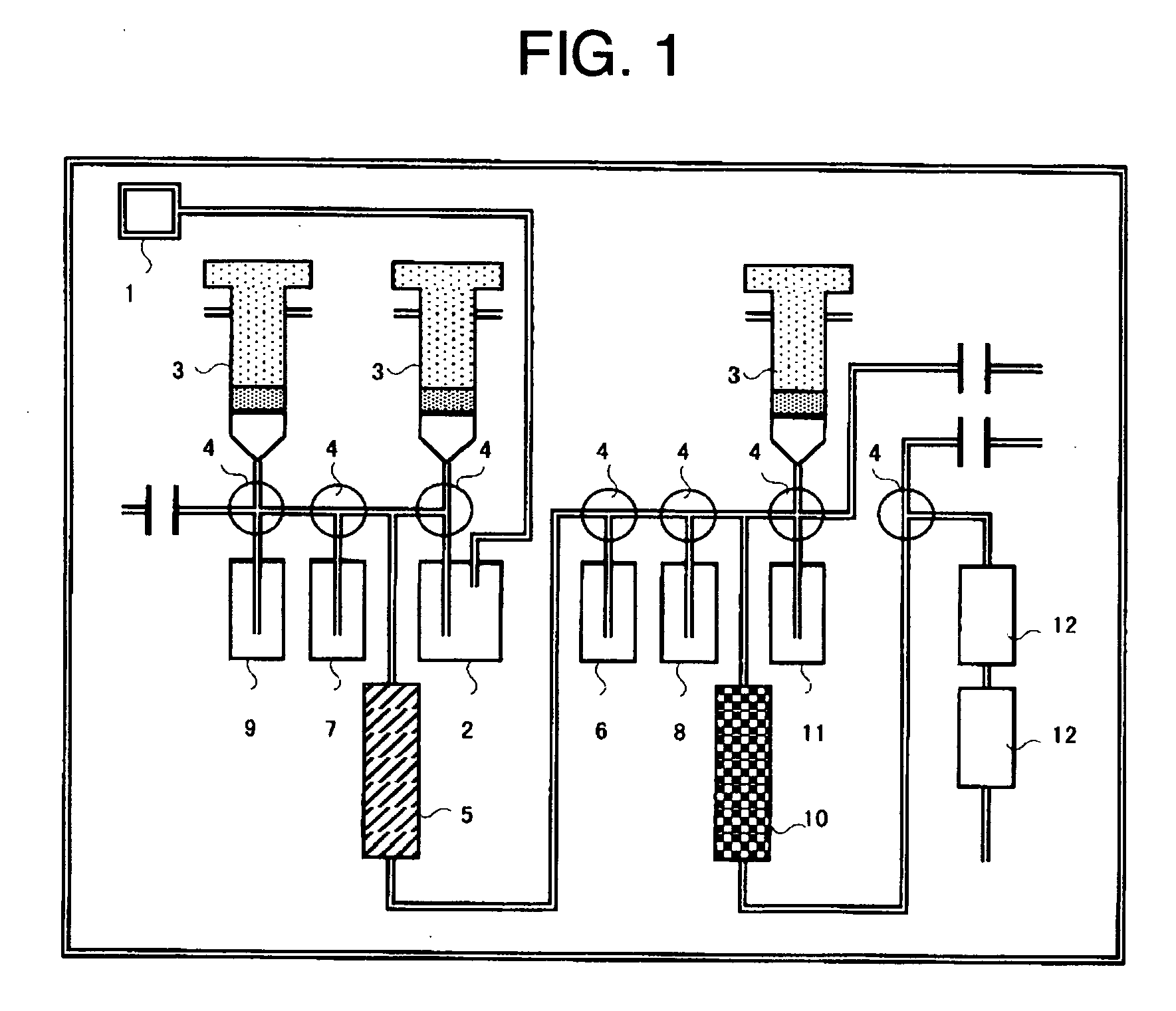Process for producing radioactive fluorine compound
a radioactive fluorine and compound technology, applied in the direction of sugar derivates, nuclear engineering, organic compounds of the group 3/13 element, etc., can solve the problems of 109.7 minutes, decay of [sup>18/sup>f] over time, and various drawbacks of the above-described conventional art, and achieve good yield
- Summary
- Abstract
- Description
- Claims
- Application Information
AI Technical Summary
Benefits of technology
Problems solved by technology
Method used
Image
Examples
example 1
Synthesis of [18F]-TAFDG
[0054] [18F]-TAFDG was synthesized according to the below steps (1) to (3).
[0055] (1) [18F] fluoride ion-containing [18O] water formation step: [18O] water was subjected to proton irradiation in a cyclotron, whereby radioactive fluorine-18 ([18F]) was generated according to the nuclear reaction (18O (p,n)→18F), to thereby obtain [18F] fluoride ion-containing [18O] water.
[0056] (2) [18F] collecting step: [18F] fluoride ion-containing [18O] water in the amount shown in Table 1 was introduced at a rate of 2 mL / min into a column (6 mm inner diameter) packed with 0.2 mL TBA resin (Example 1) or TBP resin (Comparative Example 1), whereby [18F] fluoride ions were collected.
[0057] (3) Fluorination step: Acetonitrile was charged for 1 minute at room temperature and at a flow rate of 10 mL / min into the column in which [18F] fluoride ions were collected, to carry out dehydration. The column was further heated with a heater to 95° C. while helium gas was being passe...
example 2
Fluorination of an Amino Acid and Glycol Ditosylate
[0063] Employing a column packed with 0.2 mL of TBA resin which was the same as that in Example 1, an intermediate (1-N-tert-butoxycarbamate-3-[18F]fluoro-1-cyclobutane-1-carboxylic acid tert-butyl ester) of fluoromethylaminocyclobutanecarboxylic acid (hereinafter “FMACBC”), an intermediate (1-N-tert-butoxycarbamate-3-[18F]fluoro-1-cyclobutane-1-carboxylic acid methylester) of fluoroaminocyclobutanecarboxylic acid (hereinafter FACBC), an intermediate (O-(2-[18F]fluoroethyl)-N-tert-butoxycarbonyl-L-tyrosine tert-butyl ester) of fluoroethyltyrosine (hereinafter “FET”), 2-[18F]fluoroethyl-p-tosylate (hereinafter “FEtOTs”) and 3-[18F]fluoropropyl-p-tosylate (hereinafter FPrOTs) were obtained using the substrates as shown in Table 2.
[0064] For each of the substrates, an amount equivalent to 100 μmol thereof was dissolved in 1.0 mL of acetontrile, and the resulting solutions were introduced into a column. In addition, for each of the s...
PUM
| Property | Measurement | Unit |
|---|---|---|
| inner diameter | aaaaa | aaaaa |
| flow rate | aaaaa | aaaaa |
| radioactive | aaaaa | aaaaa |
Abstract
Description
Claims
Application Information
 Login to View More
Login to View More - R&D
- Intellectual Property
- Life Sciences
- Materials
- Tech Scout
- Unparalleled Data Quality
- Higher Quality Content
- 60% Fewer Hallucinations
Browse by: Latest US Patents, China's latest patents, Technical Efficacy Thesaurus, Application Domain, Technology Topic, Popular Technical Reports.
© 2025 PatSnap. All rights reserved.Legal|Privacy policy|Modern Slavery Act Transparency Statement|Sitemap|About US| Contact US: help@patsnap.com



